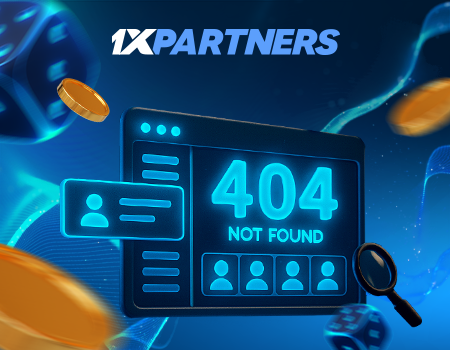Many people fail in affiliate marketing without knowing why. It’s not always one big mistake — it’s often small ones that go unnoticed. These “silent killers” eat away at your traffic, leads, and income, slowly draining your potential while everything looks fine on the surface.
You might be doing the right things — publishing content, driving traffic, and sharing links. But if just one part of your strategy is weak, your results can drop fast. Worse, you may keep repeating the same mistakes, thinking the system doesn’t work.
Mistake #1 – Getting Traffic Without a Plan
Getting traffic is not the goal. Getting the right traffic is. If you just attract random visitors, most will not care about your offer. You might spend money and time, but see no results. It feels like you’re doing the work — but nothing grows. To fix this, define your audience first. Know their age, interests, and needs.
Choose traffic sources that match your product. Use ads, blogs, or social media that speak their language. Focus on quality, not just numbers. A small group of buyers is better than thousands of clickers who never convert.
Mistake #2 – Writing Content Just to Post Something
Some affiliates think just being active, posting a blog or a video, is enough to get good results. Content with zero real value does not help businesses rank on searches, and it does not help in selling either. It’s not simple. Search engines are more strict regarding quality these days, and so are your readers.
Trust also gets damaged by poor quality content. If the problem a reader has spent time clicking on an article claiming to provide an easy solution doesn’t exist and provides nothing useful instead, there is no way they are ever coming back. The icing on the cake is the fact that they might see your future content and skip it automatically. My point here is, you’ve lost the readers.
Focus on teaching or writing content that helps with solving real life problems instead. Have every post goal oriented. It can be explaining product usage, comparing services, or answering frequently asked questions. Ensure there is a reason to stay and a reason to come back.
Mistake #3 – Choosing Low-Quality Traffic
Buying cheap traffic may look like a smart move at first, especially if you’re promoting high-converting betting offers. But if that traffic is full of bots, fake clicks, or uninterested users, you’re just burning money. These visitors won’t sign up, won’t place bets, and won’t stick around. In fact, you may see thousands of visits with zero real deposits — a red flag for most affiliate programs.
- Low-quality leads don’t just fail to convert. They might mess up your name, lower your pay rates, or even get you kicked from big betting partner s͏ites.
- Some sites have hard rules about how good the traffic is, mainly in regulated markets.
To avoid this, always choose trusted ad networks or targeted communities. Focus on countries and channels that match your betting niche.
Mistake #4 – Ignoring CPA Affiliate Programs
Many beginners focus only on revenue share models because they seem simple — earn a cut from what users spend. But they often ignore CPA affiliate programs, which can pay much more upfront. With CPA, you get paid a fixed amount for each qualified action — like a registration or first deposit.
If you’re promoting betting or casino platforms, CPA deals can be a game-changer. You don’t need to wait weeks to earn. One conversion could earn you $20, $50, or even more. But many affiliates miss this opportunity by sticking with outdated models.
Take time to compare models and choose what fits your traffic best. If your content brings fresh, motivated users — CPA is worth it. You can explore top offers in this CPA affiliate programs guide to start strong.
Mistake #5 – Bad Landing Pages That Push Users Away
You executed everything correctly — made a post, created ads, and generated traffic. However, once users arrive at your landing page, they leave immediately. The reason could be because the page is dull, disorganized, or sluggish.
Conversations are facilitated on your landing page. It is the focal point for visitors. Weak motivation to act equals no clicks. If trust is low, especially when the site is older looking and slow, users will not engage.
Turn to using good pictures, strong calls to actions, and use concise titles. Ensure every page or part is quick to load and is streamlined toward a single goal. Test and eliminate different styles until you find the best fit.
Mistake #6 – Not Understanding Search Arbitrage
Search Arbitrage can sound exciting — buy cheap clicks and earn more when users convert. It works for some affiliates, especially in high-paying niches like betting. But without a real strategy, it can drain your budget fast.
Lots of sellers leap into trade without seeing the rules. They pick poor words, use weak pages, or send visitors to low-yielding deals. The result? A ton of costs and no gain.
If you want to try this method, first read this Search Arbitrage guide. It explains how the model works in 2025, what risks to avoid, and how to start safely. Arbitrage can work — but only if you understand the full picture.
Mistake #7 – Watching Likes, Not Sales
It’s easy to get excited when your post gets likes, comments, or shares. But in affiliate marketing, those numbers don’t always mean success. You might have a viral post — but if no one clicks your link or makes a deposit, you’re not earning.
This mistake is common with social media campaigns. People focus on engagement, not conversions. Vanity metrics feel good, but they don’t pay your bills.
Track the right data:
- clicks,
- signups,
- deposits,
- and payouts.
Use tracking tools to follow each user’s journey. You’ll learn what works — and what’s just noise. Focus on results, not reactions.
Mistake #8 – No Updates, No Tests, No Growth
Certain affiliates with hope in their campaigns tend to wish things just keep working as they did in the past without putting any effort. The industry is constantly evolving and changing. Last month’s effective strategies can differ today. There are shifts in user activity. Changes occur to offers. Outcomes evolve.
In the absence of updates or tests made, drop results will be witnessed. Money will be pushed toward pointless advertisements which people have lost interest in. You will also be wasting traffic on pages that no longer convert.
Try testing bids, buttons, offers and even new sources or landing pages. Do not stop expanding your knowledge from the metrics provided. Significant achievements can be obtained from small changes.
Mistake #9 – Copying Competitors Without a Plan
It’s clever to see what others do. Looking at rivals can spark new thoughts and help you get the market. But just mimicking another’s plan won’t promise success! What works for one partner may flop for another: their crowd, way of talking, deals, and funds could be very different from your own.
You also don’t know their internal goals. Maybe they’re testing a risky strategy. Maybe they’re running paid traffic with a huge budget. Or maybe they’re just doing things wrong — and you’re copying a failing method. Without context, you risk repeating their mistakes instead of learning from them.
Here’s what to do instead:
- Observe, but don’t clone.
- Take ideas, but adapt them to your style and users.
- Focus on your audience’s real needs — not your competitor’s layout or color scheme.
- Test everything.
Your content should sound like you, not like someone else. Your landing pages should reflect your offer, not a generic copy. The most successful affiliates create value with their own strategy. Learn, test, and grow — don’t just follow. Standing out builds trust. And trust builds conversions.
Mistake #10 – No Real Connection with Users
Affiliate marketing isn’t just about clicks — it’s about trust. If users don’t trust you, they won’t follow your advice, click your links, or deposit money. Many affiliates skip this part. They focus only on traffic and ignore relationship-building.
Here’s what a strong connection looks like:
- You offer honest recommendations, not just promotions.
- You reply to comments or emails.
- You build an email list and send useful updates.
- Your content sounds human, not robotic.
Without trust, users might click once and disappear. With trust, they come back — and convert again. Start building a real community, even if it’s small.
Mistake #11 – Jumping Between Tools, Niches, and Tactics
When you don’t see fast results, it’s tempting to switch things up. Try a new offer. Change niches. Use another tool. But jumping too often means you never build anything solid.
Affiliate success takes time. You need to test, learn, and grow one system before jumping to the next.
Avoid these habits:
- Trying 5 niches in one month.
- Changing platforms before results show.
- Using every new tool without mastering any.
Instead, pick one path and stick to it for a while. Focus brings results. Scattered efforts lead nowhere.
Summary – Fix These Mistakes and Watch Your Growth Return
Most affiliate marketing mistakes don’t shout. They whisper. That’s why so many affiliates lose money without knowing why.
Here’s what you can do today:
- Track the right data.
- Improve your traffic quality.
- Use better landing pages.
- Explore CPA affiliate programs.
- Test everything — and trust the process.
If you fix even a few of these silent killers, you’ll start seeing better numbers, better users, and better payouts. Affiliate marketing rewards those who learn, adapt, and stay focused.





